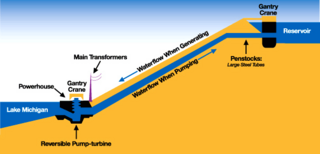This is your morning Open Thread. Pour your favorite beverage and review the past and comment on the future.
Find the past “On This Day in History” here.
August 11 is the 223rd day of the year (224th in leap years) in the Gregorian calendar. There are 142 days remaining until the end of the year.
On this day in 1934, the first Federal prisoners arrived at Alcatraz.
A group of federal prisoners classified as “most dangerous” arrives at Alcatraz Island, a 22-acre rocky outcrop situated 1.5 miles offshore in San Francisco Bay. The convicts–the first civilian prisoners to be housed in the new high-security penitentiary–joined a few dozen military prisoners left over from the island’s days as a U.S. military prison.
Alcatraz was an uninhabited seabird haven when it was explored by Spanish Lieutenant Juan Manuel de Ayala in 1775. He named it Isla de los Alcatraces, or “Island of the Pelicans.” Fortified by the Spanish, Alcatraz was sold to the United States in 1849. In 1854, it had the distinction of housing the first lighthouse on the coast of California. Beginning in 1859, a U.S. Army detachment was garrisoned there, and from 1868 Alcatraz was used to house military criminals. In addition to recalcitrant U.S. soldiers, prisoners included rebellious Indian scouts, American soldiers fighting in the Philippines who had deserted to the Filipino cause, and Chinese civilians who resisted the U.S. Army during the Boxer Rebellion. In 1907, Alcatraz was designated the Pacific Branch of the United States Military Prison.
In 1934, Alcatraz was fortified into a high-security federal penitentiary designed to hold the most dangerous prisoners in the U.S. penal system, especially those with a penchant for escape attempts. The first shipment of civilian prisoners arrived on August 11, 1934. Later that month, more shiploads arrived, featuring, among other convicts, infamous mobster Al Capone. In September, George “Machine Gun” Kelly, another luminary of organized crime, landed on Alcatraz.
By decision of Attorney General Robert F. Kennedy, the penitentiary was closed on March 21, 1963. It was closed because it was far more expensive to operate than other prisons (nearly $10 per prisoner per day, as opposed to $3 per prisoner per day at Atlanta), half a century of salt water saturation had severely eroded the buildings, and the bay was being badly polluted by the sewage from the approximately 250 inmates and 60 Bureau of Prisons families on the island. The United States Penitentiary in Marion, Illinois, a traditional land-bound prison, opened that same year to serve as a replacement for Alcatraz.
The entire Alcatraz Island was listed on the National Register of Historic Places in 1976, and was further declared a National Historic Landmark in 1986. In 1993, the National Park Service published a plan entitled Alcatraz Development Concept and Environmental Assessment. This plan, approved in 1980, doubled the amount of Alcatraz accessible to the public to enable visitors to enjoy its scenery and bird, marine, and animal life, such as the California slender salamander.
Today American Indian groups such as the International Indian Treaty Council hold ceremonies on the island, most notably, their “Sunrise Gatherings” every Columbus and Thanksgiving Day.

 In a sense, Sunday Train has been mentioning reverse pumped hydro before the Sunday Train actually existed. In 2007 at Daily Kos, in “Driving Ohio on Lake Erie” (
In a sense, Sunday Train has been mentioning reverse pumped hydro before the Sunday Train actually existed. In 2007 at Daily Kos, in “Driving Ohio on Lake Erie” ( In 1829, James Smithson died in Italy, leaving behind a will with a peculiar footnote. In the event that his only nephew died without any heirs, Smithson decreed that the whole of his estate would go to “the United States of America, to found at Washington, under the name of the Smithsonian Institution, an Establishment for the increase and diffusion of knowledge.” Smithson’s curious bequest to a country that he had never visited aroused significant attention on both sides of the Atlantic.
In 1829, James Smithson died in Italy, leaving behind a will with a peculiar footnote. In the event that his only nephew died without any heirs, Smithson decreed that the whole of his estate would go to “the United States of America, to found at Washington, under the name of the Smithsonian Institution, an Establishment for the increase and diffusion of knowledge.” Smithson’s curious bequest to a country that he had never visited aroused significant attention on both sides of the Atlantic.
Recent Comments